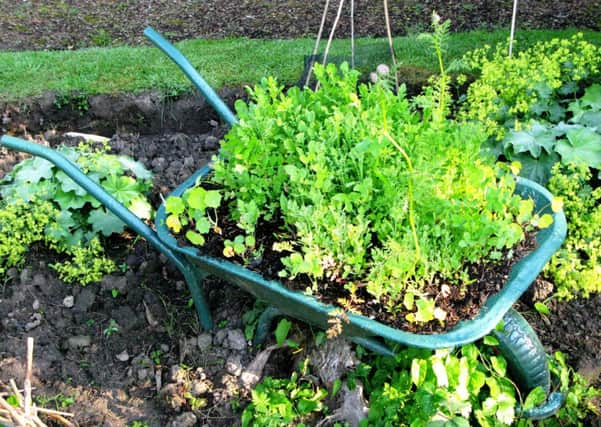Mow, sow, weed and water


“Busy” is one word to describe the 30 days that see plants – both wanted and unwanted – make the most of the improving conditions. So brace yourself and let battle commence. There needs to be only one winner – the gardener.
Start by weeding – and then weeding some more. Pull out any annual weeds as they appear. Stop weeds from seeding and you’ll be saving yourself a lot of hard work and heartache in the future.
Advertisement
Hide AdAdvertisement
Hide AdAnd get tough with perennials like buttercups and dandelions. Dig them up, root and all, spray them with a glyphosate-based herbicide or just keep pulling off the leaves and flowers whenever they appear.
Keep the watering can to hand – new and young plants have insatiable thirsts, and container-bound plants rely on you for regular feeding and watering. The same applies to many soft fruits – while you’re watering, keep an eye out for pests and diseases because the earlier they are dealt with, the better the plants will be.
And when there’s a minute to spare, prune spring-flowering shrubs and cut back early perennials that have finished blooming.
And now’s also probably a good time to remove the faded foliage of spring bulbs. While you’re at it, lift and divide any over-sized clumps, discarding damaged and diseased bulbs.
Advertisement
Hide AdAdvertisement
Hide AdMowing the lawn becomes a weekly chore; sometimes, it becomes a twice-weekly chore. But if you like grass, you have to work to maintain it and keep it looking healthy. That means watering when the weather is really dry and applying an occasional liquid feed. And always keep the edges well trimmed.
Summer bedding and hanging-baskets should have been planted out by now or be in the process of being planted out, and any outdoor tomatoes should be...outdoors where it’s warm and sheltered.
Even though it’s only June, it pays to look ahead – plant winter brassicas and sow the likes of polyanthus and pansies to produce hearty, healthy specimens that are able to withstand the cold months to come.
There are many more jobs to do, but you’ll probably need a well-earned rest before you tackle them.